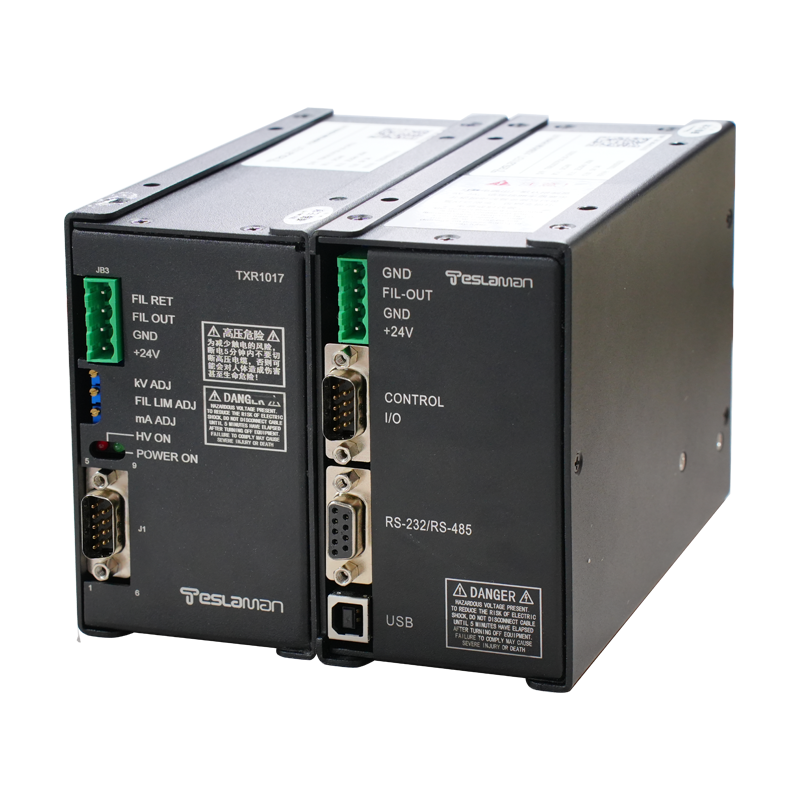The Key Role and Technical Challenges of High-Voltage Pulsed Power Supplies in Electromagnetic Protection Equipment
With the rapid development of modern electronic technology, the impact of electromagnetic interference (EMI) and electromagnetic pulse (EMP) on electronic devices is becoming increasingly significant. To effectively address this issue, the application of electromagnetic protection equipment has become crucial. In this field, high-voltage pulsed power supplies play a pivotal role. This article will discuss the key role of high-voltage pulsed power supplies in electromagnetic protection equipment and the technical challenges they face from a professional perspective.
I. The Key Role of High-Voltage Pulsed Power Supplies
1. Generation of High-Energy Pulses: High-voltage pulsed power supplies are capable of generating high-energy, short-duration pulse outputs. Such high-energy pulses are an effective means of interference against sources of electromagnetic radiation, disrupting their normal electromagnetic emission patterns and achieving protection purposes.
2. Rapid Response: Compared to other types of power supplies, high-voltage pulsed power supplies have a faster response speed. This means that in the face of electromagnetic threats, they can quickly generate the required pulse output, providing timely protection for the protected equipment.
3. Wideband Characteristics: The pulses generated by high-voltage pulsed power supplies have wideband characteristics, covering a wide frequency range. This enables them to counteract various types of electromagnetic interference at different frequencies.
II. Technical Challenges
1. Output Stability and Accuracy: To ensure the stability and accuracy of high-voltage pulsed power supplies when generating high-energy pulses, a series of technical issues such as the selection and matching of internal components, circuit board layout, and heat dissipation design must be addressed.
2. Reliability and Lifespan: Due to the special working environment of high-voltage pulsed power supplies, which operate at high voltage and power for extended periods, their reliability and lifespan become key technical challenges. This requires optimizing circuit design, selecting high-quality components, and strengthening thermal management to improve.
3. Safety Protection and Isolation: High-voltage pulsed power supplies generate high voltage and current during operation, so strict safety protection measures must be taken to prevent harm to operators and equipment. At the same time, effective isolation between the power supply and the protected equipment must be achieved to ensure overall system safety.
4. Intelligence and Adaptive Capability: As the electromagnetic environment becomes increasingly complex, a single fixed parameter setting may not meet protection needs. Therefore, high-voltage pulsed power supplies should possess intelligence and adaptive capabilities, capable of automatically adjusting output parameters according to actual conditions to achieve optimal protection effects.
III. Conclusion
High-voltage pulsed power supplies play an irreplaceable role in electromagnetic protection equipment. However, in practical applications, they also face many technical challenges. To overcome these challenges, continuous technological innovation and optimized design are needed. In the future, with the continuous development of power electronics technology, control technology, and intelligent technology, we have reason to believe that high-voltage pulsed power supplies will play an even more important role in the field of electromagnetic protection, providing strong guarantees for the safe and stable operation of electronic devices.
At the same time, to address the ever-changing electromagnetic threat environment, future research and development of high-voltage pulsed power supplies should focus on the following aspects: First, improving the intelligence level of the power supply to achieve self-adaptive adjustment and remote control; second, strengthening the cooperative working capability with other protective equipment to form a comprehensive protection system; third, focusing on environmental protection and energy efficiency in design, reducing energy consumption and minimizing environmental impact.




















